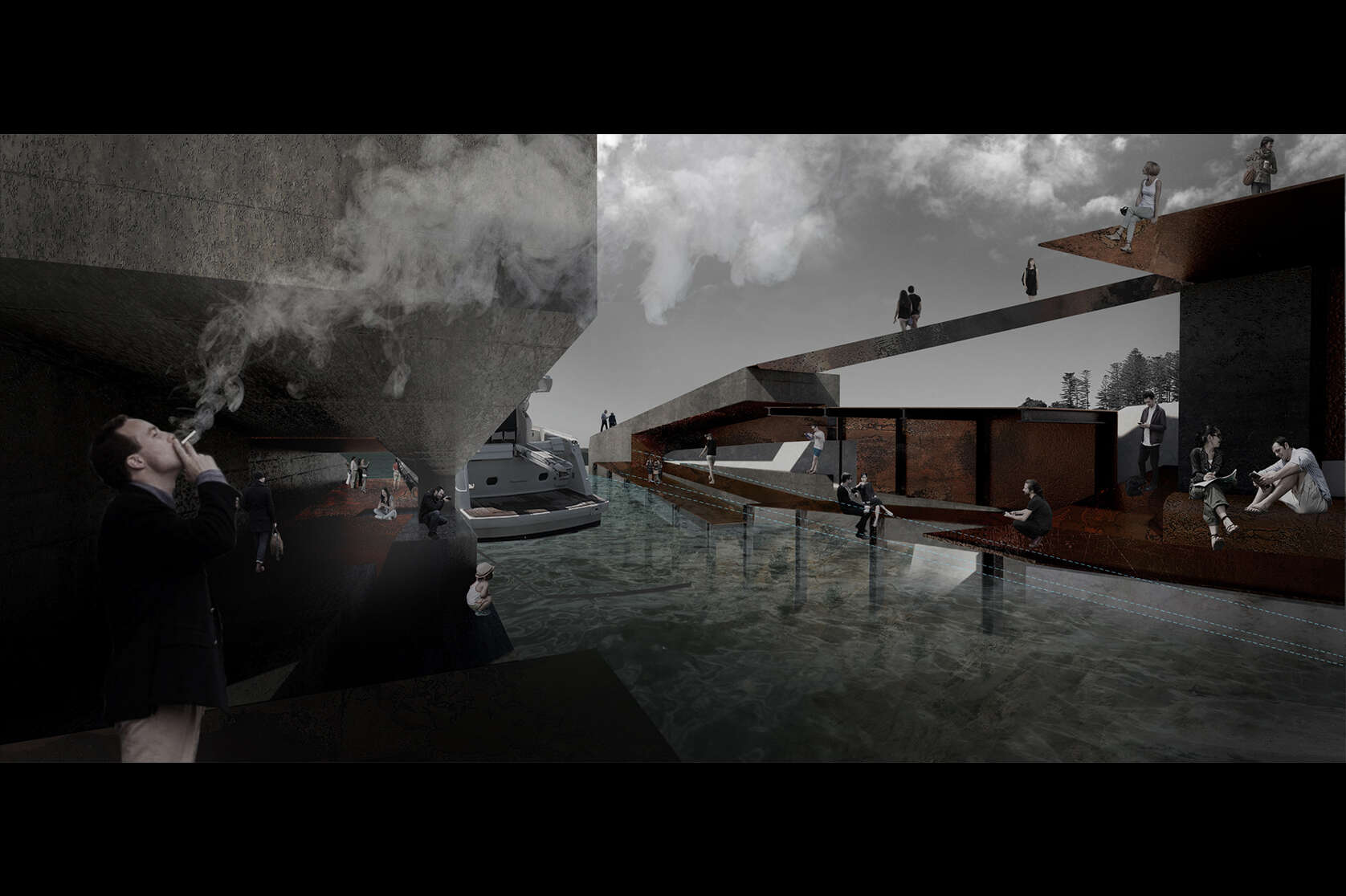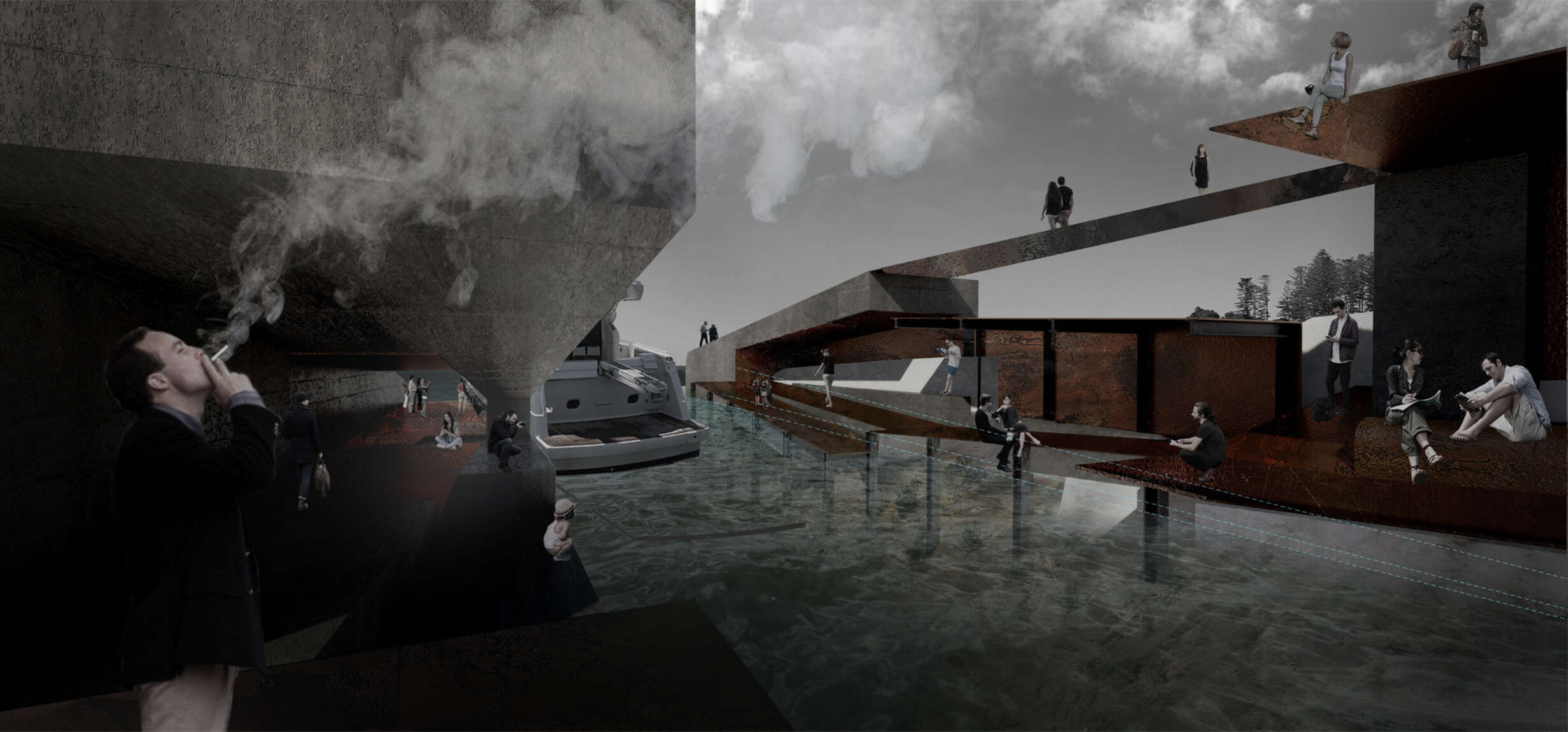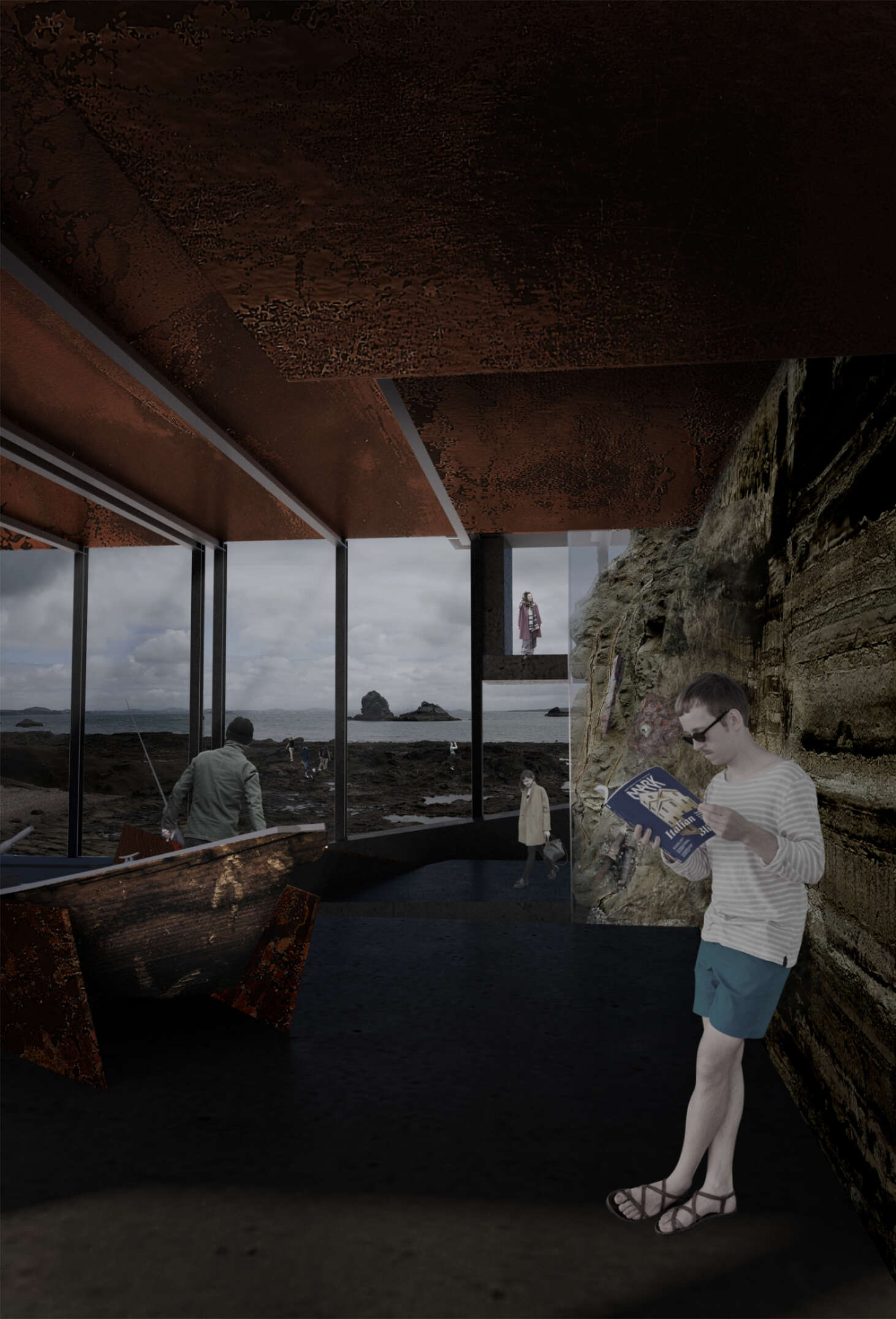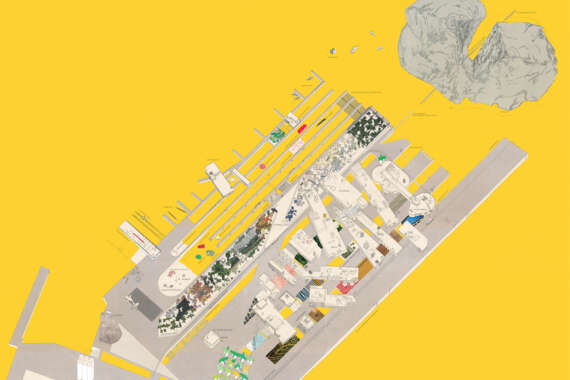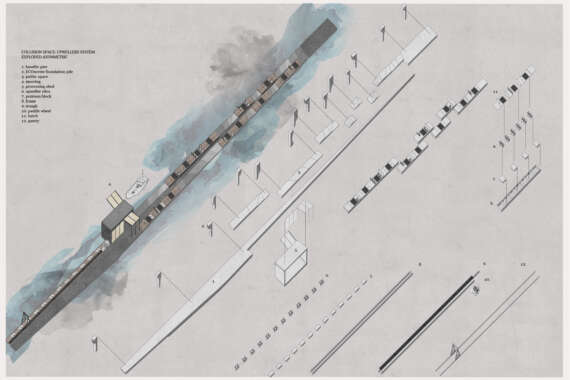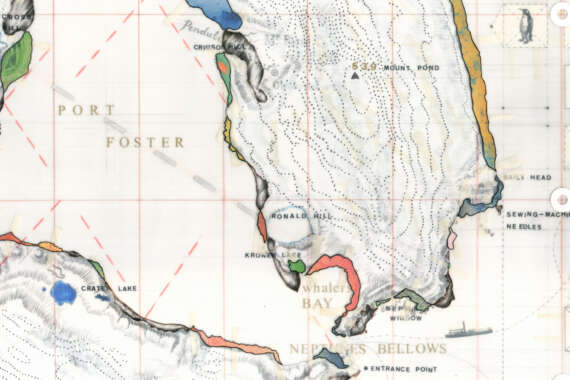Historically, coastal inundation and regular flooding have only been perceived in extreme cases such as the famous aqua alta of Venice. This thesis seeks to engage with this newly vulnerable coastal condition that is steadily proliferating across the world. Furthermore, this thesis seeks to confront the flooding planes and eroding cliffs, proposing an architecture that engages this new instability in ways that will both protect but ultimately accept a capitulation to the rising water. In the extra years brought back from the encroaching tide this architecture will act as shield, and as prosthetic land before creating a synthetic landscape architecture with which to flexibly interact with the water.
The investigation into the receding edge condition and engagement with water highlights the potential of Motuihe Island – an island composed of compacted sediment, rather than a volcanic island. The physical museum itself houses the artefacts of island history. While the objects are representative of the island’s history, the architecture also modifies the island, turning it into a museum of itself. The architecture augments the landscape, protecting natural land forms, as well as incising the land, creating galleries from which the island becomes the exhibit.
Over time, due to prolonged exposure to the increasing harshness of weather and rising sea level, Motuihe Island will erode away. Through the steady detrition of the coastal edge, the erosion will slowly reveal the architecture that frames the island. The built forms will shield the island and impede the forces of nature, as the architecture becomes the island.
